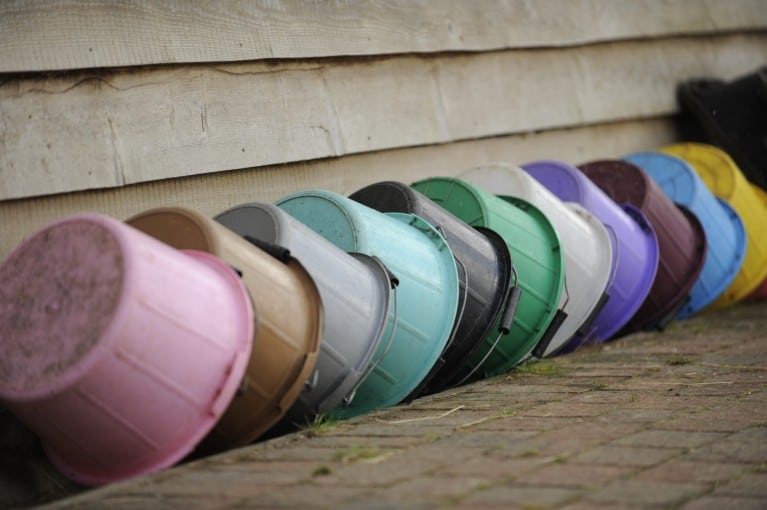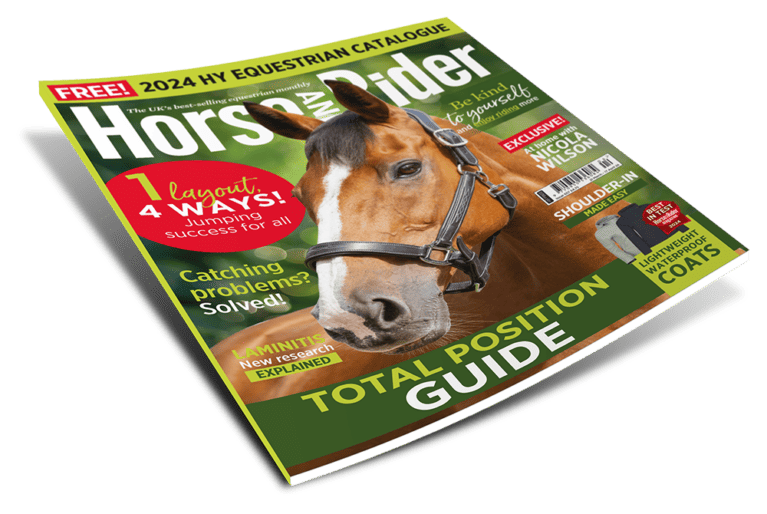Feeding your horse during freezing conditions requires special care – don’t be without these top tips

Whether your horse is stabled or living out, making sure he stays warm and nourished during the colder months is all-important. Here, TopSpec offer some must-have tips for making sure you feed your horse correctly when snow, ice and freezing temperatures hit…
Horses living out
Ensure water is available as constantly as possible
At least twice a day break ice, add hot water or do whatever you can to provide drinkable water. Horses will not drink snow!
Provide generous amounts of hay or haylage at least twice daily
When grazing is covered by snow or frozen hard, it is essential to provide a source of fibre for the microbes in the horse’s hindgut to digest. As they digest the fibre they provide a constant source of fuel for the horse and the fermentation process literally warms him up from the inside out. This is perfect central heating and far kinder for your horse than giving him a hard feed made with hot water which is of little benefit.
Remember that your horse would normally graze for at least 16 hours a day so try to provide at least enough hay or haylage to keep him eating for that long if he cannot graze.
Balance his forage with a feed balancer or supplement
In order to provide essential micronutrients feed either a suitable feed balancer or supplement mixed with damp chop.
Only provide a traditional hard feed if your horse is used to receiving one
To suddenly introduce significant quantities of hard feed when the microbes in your horse’s hindgut are not used to digesting them risks colic. However if he normally gets a hard feed it is safe to continue or even feed up to 25% more providing you do not exceed his stomach’s capacity e.g. 2kg per feed for a 500kg horse.
Avoid suddenly introduce cereals to a horse’s feed
If you do not normally feed cereals or cereal-based compound feed do not suddenly introduce them as you again risk digestive upset, especially when forage intake is limited as the microbial balance in the hindgut will be disturbed. If you normally feed a cereal based feed you may need to feed less if you cannot supply ample forage.
Avoid suddenly rug up a wet horse or pony
Native ponies and others living out without rugs are best left to use their coats as nature intended, just ensure ample hay/haylage. If you are already using rugs then check that they are not damaged/leaking.
Stabled horses
Ensure water is available as constantly as possible
It may mean going back to buckets!
Avoid turning out unless safe to do so and he is well rugged up
A sand school is great in cold weather and an indoor school that you can access is perfect in severe snow or ice but most horses and ponies are best kept safely indoors if turn out poses any risk.
Provide generous amounts of hay or haylage
Provide extra hay or haylage to counteract boredom and replace the nutrients that might have been gained from grazing.
Balance his forage with a feed balancer or supplement
In order to provide essential micronutrients feed either a suitable feed balancer or supplement mixed with damp chop.
Cut out all other hard feed
Even if your horse is able to have a short buck and a kick in a suitable safe place he is unlikely to be in normal work and, unless he is, you need to cut out his hard feed until he can return to work.
Avoid turning horses or ponies prone to laminitis out on cold, frosted grass
Limit turnout severely on cold, bright days, even when the frost has gone.
Need more help or advice?
The free TopSpec helpline is open in all weathers! Call 01845 565030 for any help you need.















